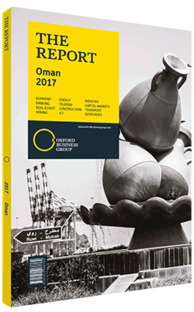Simon Buttery, CEO, Carillion MENA, on innovative approaches to funding construction projects: Interview

Interview: Simon Buttery
How much potential is there for the public-private partnership (PPP) funding model to boost major development projects in Oman?
SIMON BUTTERY: Dependent economies across the MENA region are really struggling financially at the moment, which is resulting in them having to consider alternative forms and sources of funding to continue with their infrastructure investment plans. This economic and fiscal climate means that governments are becoming more reliant on the private sector to bring innovation to the construction and asset management sectors. The PPP model is one of these innovations, and it has significant potential in the sultanate. PPPs have already been successfully implemented in the power and water sectors. Most of the regulations are already in place, and there is definitely a confidence in the government that this mechanism will work successfully to deliver much needed infrastructure to the country. I think the best way forward is for the government to look at the various forms of PPP models that exist around the world and take the best aspects of each to create a standard form of PPP in Oman. I also believe the government should seriously consider creating a dedicated department to oversee the PPP procurement process. This would help accelerate the pace of the model’s uptake and boost the government’s confidence in using it.
What strategies have Omani construction firms been employing to deal with delayed payments?
BUTTERY: Cash is a huge issue, and there are serious fiscal constraints in the sector. All contractors – in the supply chain especially – are carrying this burden in their projects, which is having a significant impact on their ability to do business and grow.
The most important thing is for firms to communicate with their clients continually. Putting in place structured payment plans is also key to show that there is a commitment from the client, even if the cash is not available at that time. This can be used as assurance for banks and the supply chain, thereby engendering confidence and allowing operations to continue. It also allows firms to be able to offer different forms of procurement, and they can actually bring funding to projects themselves, as well as provide alternative funding routes. UK Export Finance, for example, provides UK-backed loans for clients to fund infrastructure.
What are the current trends in construction?
BUTTERY: We see a much more competitive market, and we are certainly seeing fewer projects come to the market due to budgetary constraints, especially from the government. This means that firms are having to look beyond their traditional lines to generate revenue. Where we see a lot of growth is in the support services segment, where the opportunity lies not only in building and contracting, but also in maintaining the assets. Support services had been bought as individual commodities – cleaning and security services, for example, were bought separately. However, we now see a lot of growth in integrated facilities management contracts, where all these services are bundled together.
This has led to a realisation that assets can be managed in a different way to add value by reducing the cost of managing them over time and ensuring that clients can concentrate on their core business. By bringing these services together and thinking about them at the early stages of construction, these projects are approached with a different mindset. In reality, the amount spent on construction is only a small part of the lifetime cost of an asset – actual expenditure is based more on maintenance. Furthermore, if a contracting firm is going to manage an asset for 30ß years, it will be far more involved in the design process to ensure that the materials used during construction allow for a more efficient management process. The big differentiating factor here is that it allows the contracting firm to develop a true partnership with the client, as opposed to the standard client-contractor relationship.
You have reached the limit of premium articles you can view for free.
Choose from the options below to purchase print or digital editions of our Reports. You can also purchase a website subscription giving you unlimited access to all of our Reports online for 12 months.
If you have already purchased this Report or have a website subscription, please login to continue.

